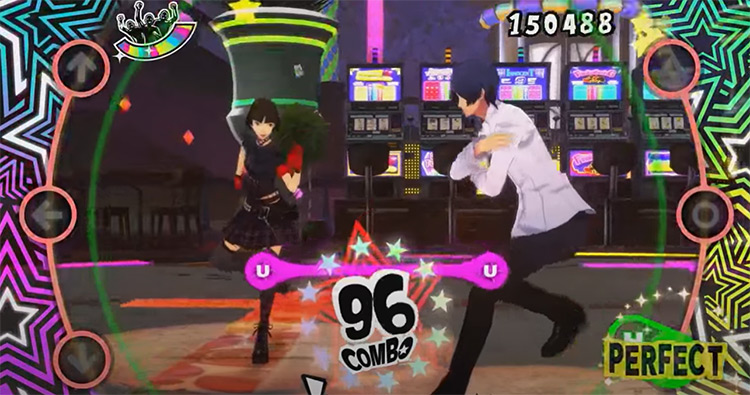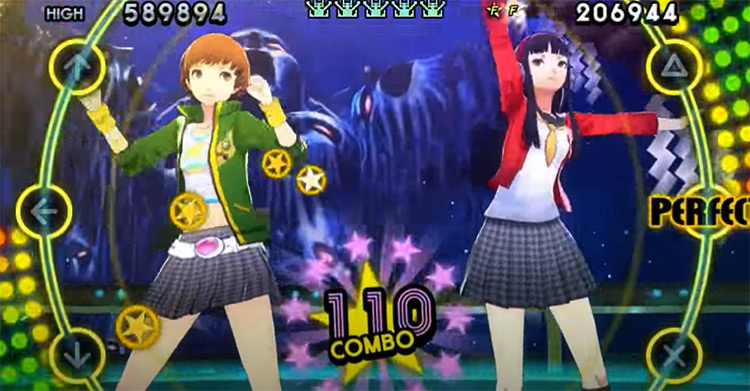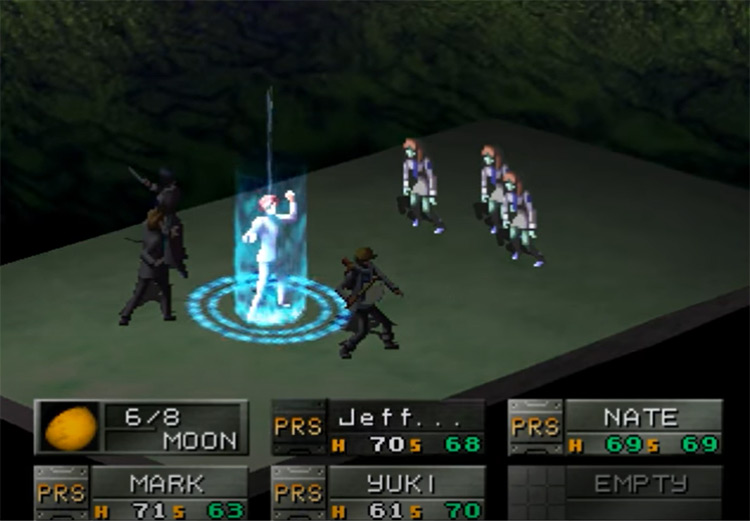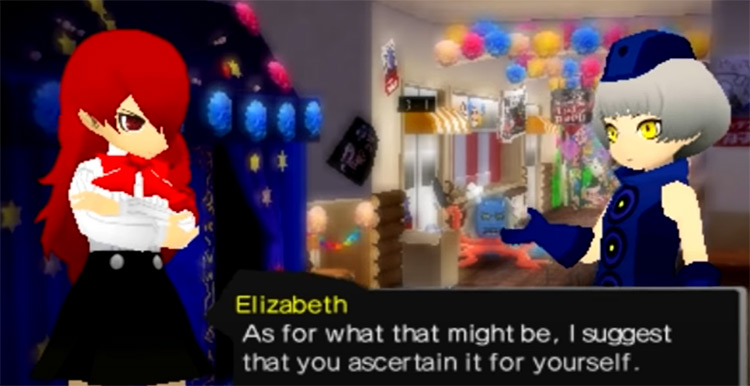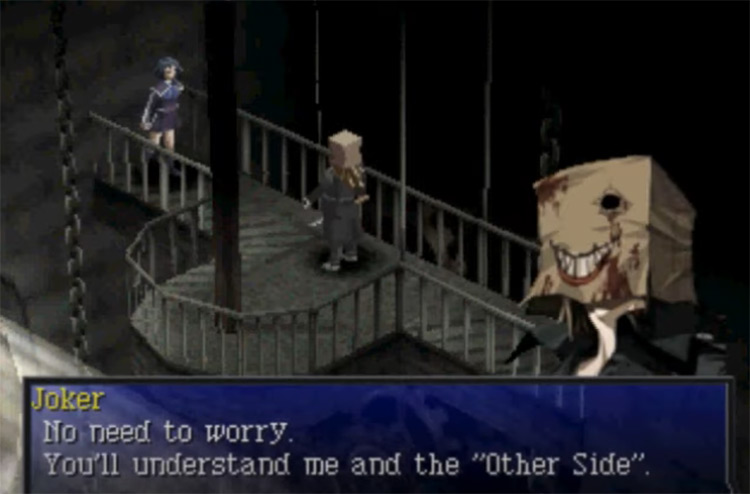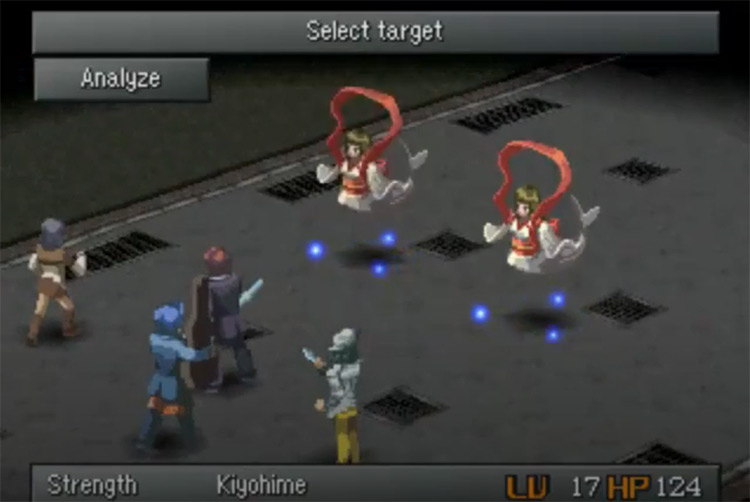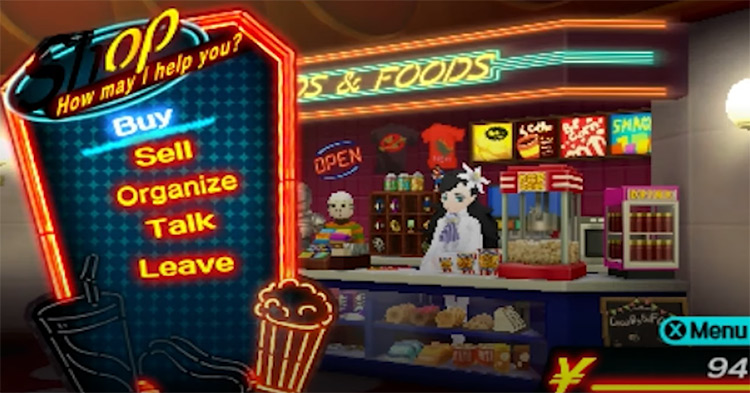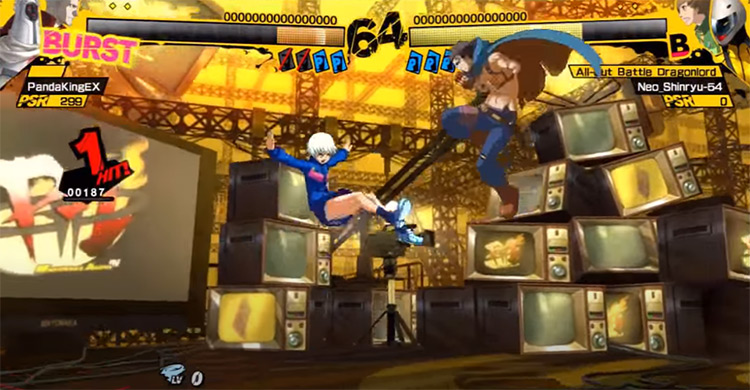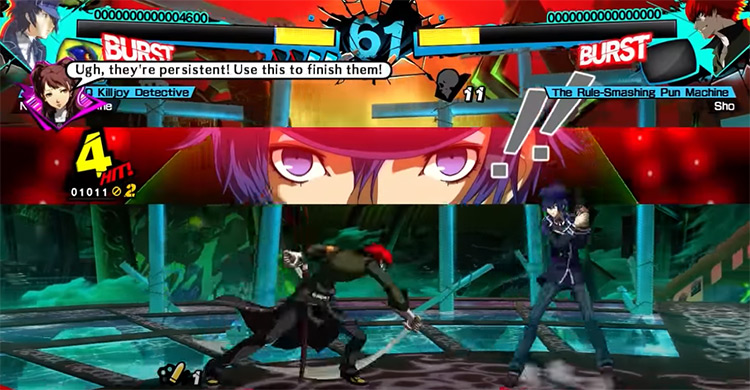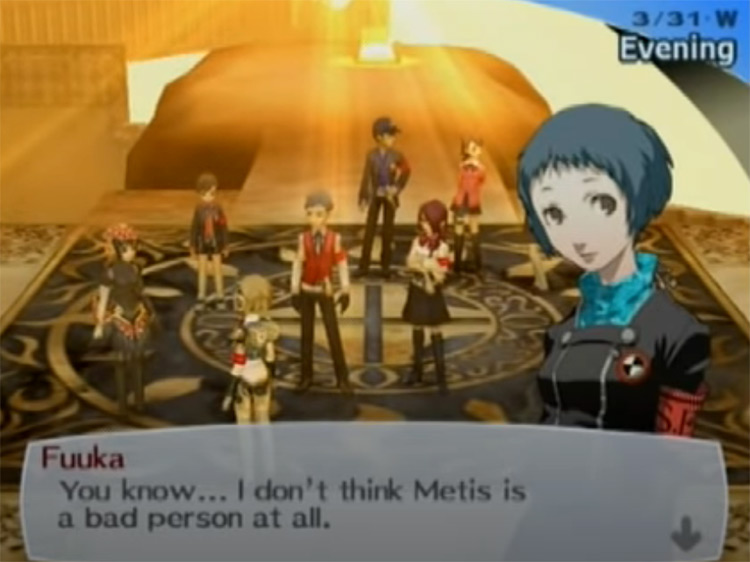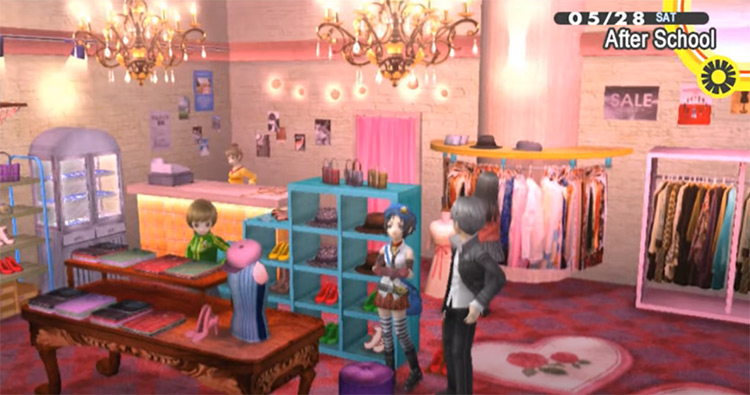It’s a series that evolves and mutates with every installment. And it’s gone from a dark and gritty dungeon crawler to a more lighthearted Social Sim/RPG in the space of 20 years. That said, Atlus’ flagship franchise only seems to get better with each installment. This is in great part thanks to excellent character design and masterful art direction that fuel a small empire of merchandise and spin-offs, including anime and manga adaptations of every major entry. It’s a great time to be a Persona fan. So whether you’re a long-time Persona aficionado looking to learn more about your favorite series, or a newcomer to Persona who doesn’t know where to start, let’s dive into every Persona game released outside of Japan to see what’s worth playing.
12. P3: Dancing in Moonlight/P5: Dancing in Starlight (2018)
Released on the same day, Dancing in Moonlight/Starlight put the characters of Persona 3 and 5 in the context of a rhythm game of surprisingly good quality. No doubt derived from Atlus’ extensive experience working on games like the Miku Hatsune Project Diva series. While the gameplay has nothing to do with the regular Persona affair, the focus on its characters is reflective of what made Persona so popular among audiences: amazing characters with likable personalities. If you like rhythm games, you’ll like this.
11. Persona 4: Dancing All Night (2015)
But Dancing in Moonlight/Starlight weren’t the first rhythm games in the Persona franchise. They weren’t the best, either. That title remains with Persona 4: Dancing All Night, released three years later for the PS4 and PSVita. While the dancing mechanics and fantastic visuals are the same as the sequels, this game actually follows a complex plot that puts all the flashy dance moves in a more Persona-related context. I love rhythm games, and the increasingly stylish characters of the franchise fit the genre wonderfully. But I don’t think getting rid of the story is going to get them anywhere.
10. Revelations: Persona (1996)
Originally released on the PlayStation, Revelations: Persona follows a group of students from St. Hermelin High who discover they can summon Persona. In this context “Persona” is a combat-ready representation of the masks we use to face society, as the lines between dreams and reality begin to blur. This plot goes deep. The setting was unlike anything Western audiences had experienced before. Not only that, but the combat system was pretty unique to boot. Especially the possibility of talking to your foes to overcome them. If you still want to play the original Persona despite the outdated combat and narrative devices, I’d recommend getting the PSP remaster. It features enhanced graphics, a re-arranged soundtrack, and animated cutscenes.
9. Persona Q (2014)
Set in a dark replica of Yasogami High School from Persona 4, Persona Q on the 3DS brings together the wonderful characters & style from modern Persona titles, with the hardcore first-person dungeon crawling of the Etrian Odyssey series. As the first Persona game on a Nintendo console, this release markets the series to a younger audience with a straightforward narrative and adorable chibi designs. If you don’t like chibi then just skip ahead. While its story is among the least impressive in the series, Persona Q offers fantastic gameplay that’s sure to keep you hooked all the way through.
8. Persona 2: Eternal Punishment (2000)
With one of the most adult-oriented stories in the Persona franchise, P2: Eternal Punishment perfects the gameplay seen on its predecessor. Actually I’d say it expands upon the gameplay with a bunch of interesting new mechanics. You control Maya Amano, a reporter who develops Persona abilities while investigating a string of bizarre events in the fictional coastline city of Sumaru. These events all seem related to a phenomenon known as the “Joker Curse”. What some people don’t know is that Eternal Punishment is actually the second game in a duology. Regrettably, only Eternal Punishment was released for Western audiences back in the day, which made the story slightly confusing. But things are different now, and gamers can (thankfully) enjoy this duology thanks to…
7. Persona 2: Innocent Sin (2011)
The first part of the Persona 2 duology would only be released for Western markets over 10 years after its original release, in the form of a PSP remake. The game follows a group of youths from Seven Sisters High School as they uncover their Persona abilities and use them to stop an antagonist known as “Joker” from spreading reality-warping rumors all around Sumaru. I’m placing this higher than its narrative continuation because of the remake. Seriously it’s great. The remake adds voice acting, a fantastic techno/rock soundtrack, and many gameplay improvements over the original that make it more approachable to modern audiences.
6. Persona Q2: New Cinema Labyrinth (2019)
I’m sorry to all Persona 2 fans who are probably outraged that I picked a spin-off over their favorite dark and gritty RPG. But I value the fun-factor above all else, and Persona Q2 for the 3DS has fun in spades. It features the same excellent dungeon crawling gameplay as its predecessor, but steps up the narrative by taking Persona 5 as a basis for its setting. The game still features playable characters from P3 and P4, but only as part of the plot. This time it follows the Phantom Thieves as they explore a bizarre movie theater within Mementos: a sort of alternate dimension shaped by society’s collective subconscious. This is a wonderful entry point to Persona for any newcomers, and the chibi Joker on the cover is just too cute.
5. Persona 4 Arena (2012)
After the massive success that was Persona 4, Atlus lost no time in funneling this fame and notoriety into other projects. Released for the PS3 and Xbox 360, Persona 4 Arena is the direct narrative continuation of P4. Set in the aftermath of its predecessor, it follows its characters as they participate in a mysterious fighting tournament called the P-1 Grand Prix, along with the surviving characters from Persona 3. It was developed by fighting-game giant Arc System Works so it has some real clean controls. And it features fantastic fast-paced gameplay full of devastating combos and flashy special attacks similar to other 2D anime fighters like BlazBlue and Guilty Gear.
4. Persona 4 Arena Ultimax (2014)
This game was truly a commercial success, prompting the development of an improved sequel, which picks up the story right where P4A ended. It follows the same characters, this time trapped inside the Dark Hour dimension featured in Persona 3. Regrettably, the story is a bit lacking. Which is a big disappointment when you consider it’s the canonical ending to Persona 4 as a whole. However, its gameplay is exceptionally polished and much more nuanced than its predecessor. It received immense praise for these technical improvements and that’s the reason why it ranks higher in our list.
3. Persona 3 FES (2008)
The third main entry in the persona franchise was the first to introduce many of the game mechanics and art direction maxims that define the series today. It places great focus on social interaction and the creation of Social Links, which translate to powerful buffs in combat. The gameplay is divided into school & social simulation during the daytime, then dungeon crawling at night. This gives you a wide variety of activities and a gameplay loop that never feels stale. The story, which follows a group of students called SEES who wield their Persona powers as they investigate a phenomenon known as the Dark Hour, is among the best in the series. Most of the characters are deeply relatable, and plot-twists are executed tastefully rather than just providing shock value. I’m placing the FES version of the game as the most representative due to the inclusion of The Answer, an extra final chapter which ties up many loose ends. That said, the PSP remaster of Persona 3 is also fantastic despite not including the additional FES content. If you can, play both.
2. Persona 4 Golden (2012)
If Persona 3 was the birth of modern Persona, then Persona 4 was the game that catapulted the series into stardom. This all happened through an iconic cast of colorful characters & incredibly stylish visual design. Once again, the story revolves around a group of students discovering their Persona powers as they look into a string of mysterious, violent murders. Fun! Each of these characters is a potential Social Link, and the game emphasizes cultivating these human connections. Despite being a bit watered down to accommodate plenty more lighthearted comedy that younger audiences might find appealing, the narrative remains well-written and will pull at your heartstrings on the regular. It was initially released for the PS2, but Persona 4 Golden on the PSVita adds two entirely new Social Links, which expands game-time considerably and opens the doors for different endings.
1. Persona 5 Royal (2020)
It’s a pleasure whenever the latest entry in a series is also the very best. And such is the case of Persona 5 Royal on the PS4. I mean really, it got a solid 10/10 rating on IGN. That’s tough to snag! P5 Royal takes everything that made Persona 4 such an interesting title and doubles down on it. This game cracks the stylish factor up to infinity and puts the creation of human bonds with your Confidants at the forefront of character development. Visually speaking, the game never ceases to amaze. From the stupidly cool menus and action prompts to the way every single action in a battle comes with stylish animations, the attention to aesthetic detail is astonishing. While Persona 5 is also available on the PS3 and going for cheap nowadays, it’s 100% worth it to go the extra mile and get Persona 5 Royal. Yes graphics are better of course, but it also features over 30 hours of entirely new gameplay. Plus it adds both new characters and mechanics to an already content-packed game.
